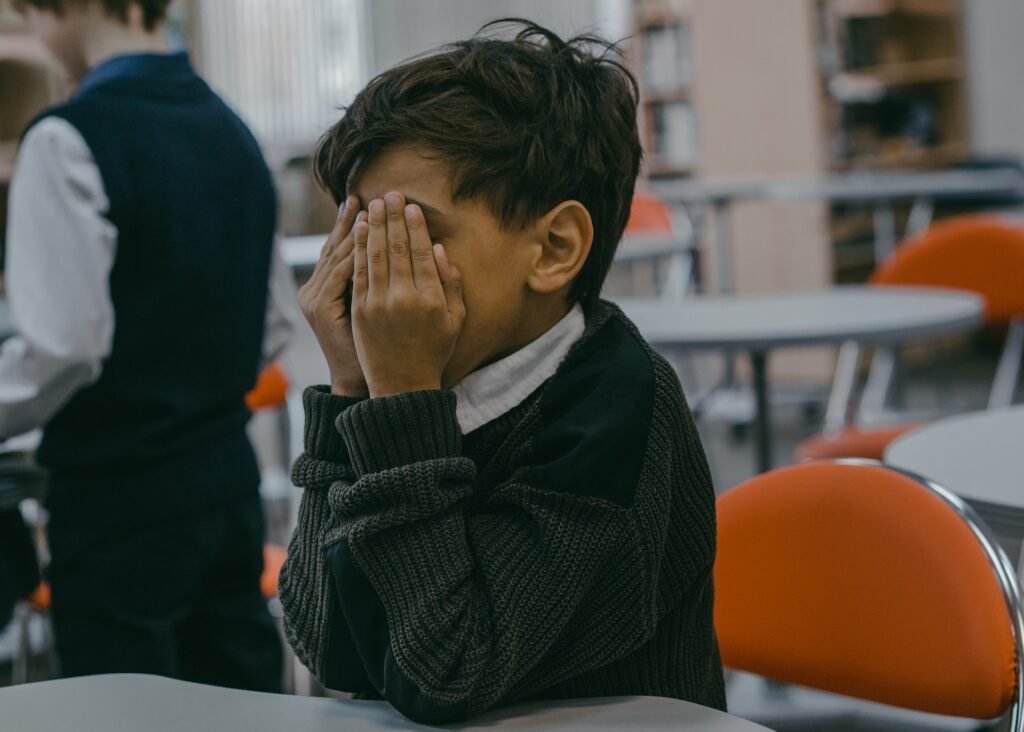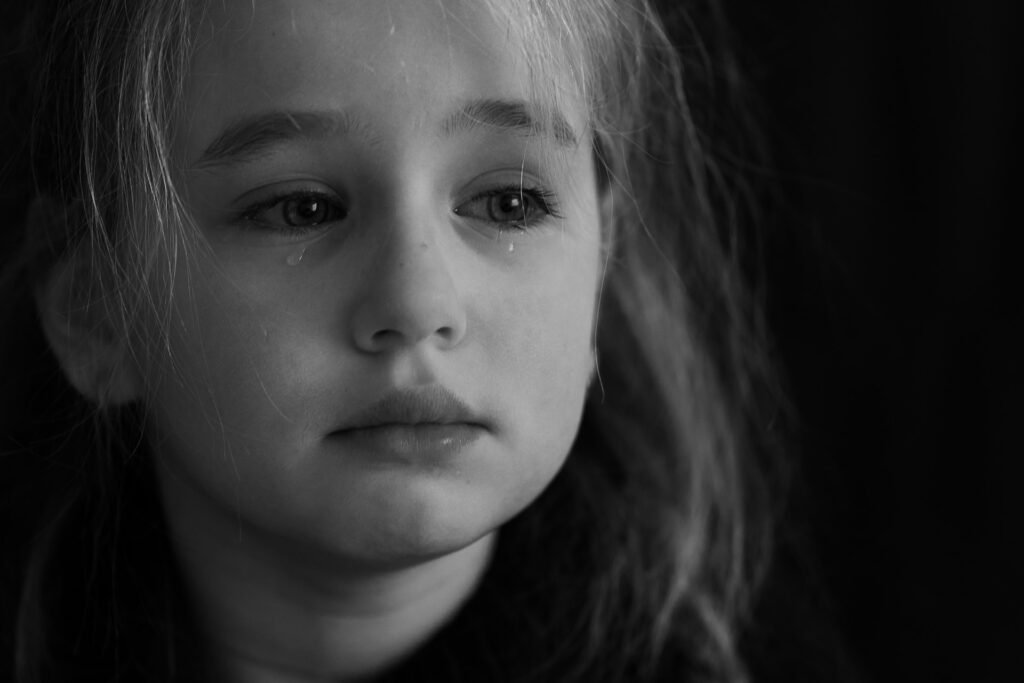
Bullying: A How To When Your Child’s The Social Bully
*Disclosure: I only recommend products I would use myself and all opinions expressed here are our own. This post may contain affiliate links at no additional cost to you and I may earn a small commission. Read full privacy policy here.”
Often, when we think of the word bully or bullying, we often imagine a larger, intimidating child hovering over a smaller child filled with fear. Bullying is not one size fits all and there are many facets and faces of children who bully.
In another scenario, the face of the bully could be your child. Does this surprise you? Most parents either have no idea or choose not to recognize the situations of their children’s behavior – we need to start seeing see this.
It’s important to curb bullying immediately. Children who are doing the bullying can often be as affected as those they target. Studies have shown, they are more likely than others to struggle with school failures, violence, crime, depression, anger, and other problems. Bullying is far too important for anyone to ignore.
Is your child the bully? Would you recognize the signs?
If you found out they were the bully, would you know what to do? I wanted to share some information that I hope can help:
Bullying: What exactly is it?
We need to recognize that bullying is much different than the traditional conflicts children encounter. Bullying is an intentional behavior that’s meant to dominate and overpower another person. It’s most defined as an imbalance of power between the bully and their target. Bullying can show itself as physical, verbal, emotional (social), or sexual. It also includes harassment using technology, such as texts, email, and social media.
Proper Verbiage: “Bully” versus “child who bullies”
When you address bullying behavior, it’s important to use the proper verbiage. It influences how children involved in the situation are perceived. Bullying is about behavior. We tend to directly label the child as a “bully” rather than addressing them as “a child who bullies”. Referencing them as “a child who bullies” recognizes that they are above all else a child who exhibits a specific behavior. For these children, there should always be a consequence to their behavior and discipline that allows them to redirect the poor behavior with a more positive action.
So, who are the bullies?
So, you think the bully is the person in the back who is wearing black, with low self-esteem, and gets angry all the time? It might be. It also might be the smaller head cheerleader or the always silent honor student. It’s behavior that defines a bully, not appearance. Bullies come from any and all backgrounds, income levels, races, genders, or religions. Studies show that regardless of their differences, a child who is a bully will have one or more of the following characteristics:
- Blame others rather than accepting responsibility for their own actions
- Lack any empathy, compassion, or understanding for others feelings
- Be experiencing bullying themselves
- Lack or have underdeveloped social skills
- Demand or need to have control
- Suffering depression, anxiety, frustration, or anger
- Find themselves figuring out how to fit in with a new peer group that displays bullying
Recognizing these traits in your child or hearing from others that your child is bullying, you must react promptly. Bullying is classified as a “learned” behavior. Whatever can be “learned” can be “unlearned”. The unwanted behavior can be replaced with more acceptable and positive behaviors. Communication and patience with your child holds the key. You need to find acceptable ways to handle anger, conflict, and feelings of peer pressure. Seek help if needed.

Here are some ideas to help your child to stop bullying:
Communicate with your child
Your child may not recognize that their behavior qualifies as bullying. In their eyes, they may feel that they are “having fun” without realizing the affect it is having on the other child. Express that the negative behavior is not acceptable and help them to understand what actually defines “bullying”.
What are the reasons for their behavior?
Creating an open, non-judgmental discussion will help you find insights as to why your child is behaving in such a harmful manner. Are they:
- Experience bullying themselves?
- Experiencing peer pressure to encourage this behavior?
Confirm that your child’s behavior is bullying and not the result of a disability.
In some instances, children with disabilities, can exhibit behaviors that can be mistaken for bullying. Certain emotional and/or behavioral disorders or children who have limited social skills are a few examples. Even if this is the case, whether this behavior is due to these circumstances or is in fact intentional, the negative behavior needs to be addressed. If your child is enrolled in the IEP (Individualized Education Program) within your school system, you will want to inform them during your yearly plan meeting.
Create an Action Plan
We discussed that “learned” behavior can be changed, but it won’t happen on its own. This is not something that your child will just outgrow. Making sure to take all things into consideration: what works best for your child, for you, and the severity of the situation, it’s important to come up with a plan of action. The most important step, Step 1, needs to be understanding the entire situation. Determine how things could be different and what in the situation needs to change. Another important factor is determining all the parties that need to be involved and what steps they need to be involved with.
Empathy, compassion and respect
Children need to understand that other children have feelings too and that their feelings matter. Not every child understands this and they need to appreciate how their behavior affects others when they are being bullied. For those who are being bullied: Emotionally Resilient Tweens and Teens: Empowering Your Kids to Navigate Bullying, Teasing, and Social Exclusion gives tweens and teens the tools to address the problem themselves and develop mastery over the situation—rather than having parents step in and try to “fix” things. This book also gives parents vital proactive strategies to help build strong family relationships, trust and connection, so that kids can be better prepared for the inevitable social challenges life brings.

Your expectations must be clear.
Express to your child that under no circumstances is bullying an acceptable behavior and that you will not tolerate it. They also need to understand that there will always be consequences for these actions. Follow through immediately if you discover that the child is involved in bullying going forward.
Provide clear and consistent consequences for bullying.
Your intentions should be clear and specific about the consequences if the bullying continues. The consequences should be meaningful such as loss of privileges or a loss of involvement in certain activities.
Always be the example.
Set the example for your child in how you personally handle different situations such as resolving conflict and ways you deal with your feelings of anger, frustration, and insecurities. Teach, be the example and also reward appropriate behavior.
Create activities that teach empathy.
Role play. Help your child practice different ways of handling bullying situations. Take turns playing the part of the child who does the bullying and the one who is bullied. Doing so may help your child understand what it’s like to be in the other person’s shoes.
Positive feedback.
When your child handles conflict well, shows compassion for others, or finds a positive way to deal with feelings, provide praise and recognition. Positive reinforcement can help improve behavior and is usually more effective than punishment.
Be realistic.
It takes time to change behavior. Recognize that there may be setbacks. Be patient as your child learns new ways of handling feelings and conflict. Keep your love and support visible.
Keep communication open with school.
Reach out to those who work with your child at school and share information about your concerns. Talk with the school principal or social worker to determine if the school offers a bullying prevention program that your child can be involved in. Research ways for your child to be involved in groups that encourage cooperative relationships and one that focuses on working with others.
Community assistance.
Your child’s doctor, faith-based professionals, coaches, or a psychologist can help you and your child learn how to understand and deal with bullying behavior. It’s important to address bullying in both the school and community.
RESOURCES:
- StopBullying.gov
- What Kids Can Do
- What Teens Can Do
- What Adults Can Do
- stompoutbullying.org
- www.justsayyes.org
- bullies2buddies.com
- safeschools.com
- Bullying and Substance Abuse
- https://www.cybersmile.org/advice-help/category/who-to-call
I invite you to share the inspiration by commenting, sharing a post, or getting in touch.
Thank you for sharing our inspiration.





